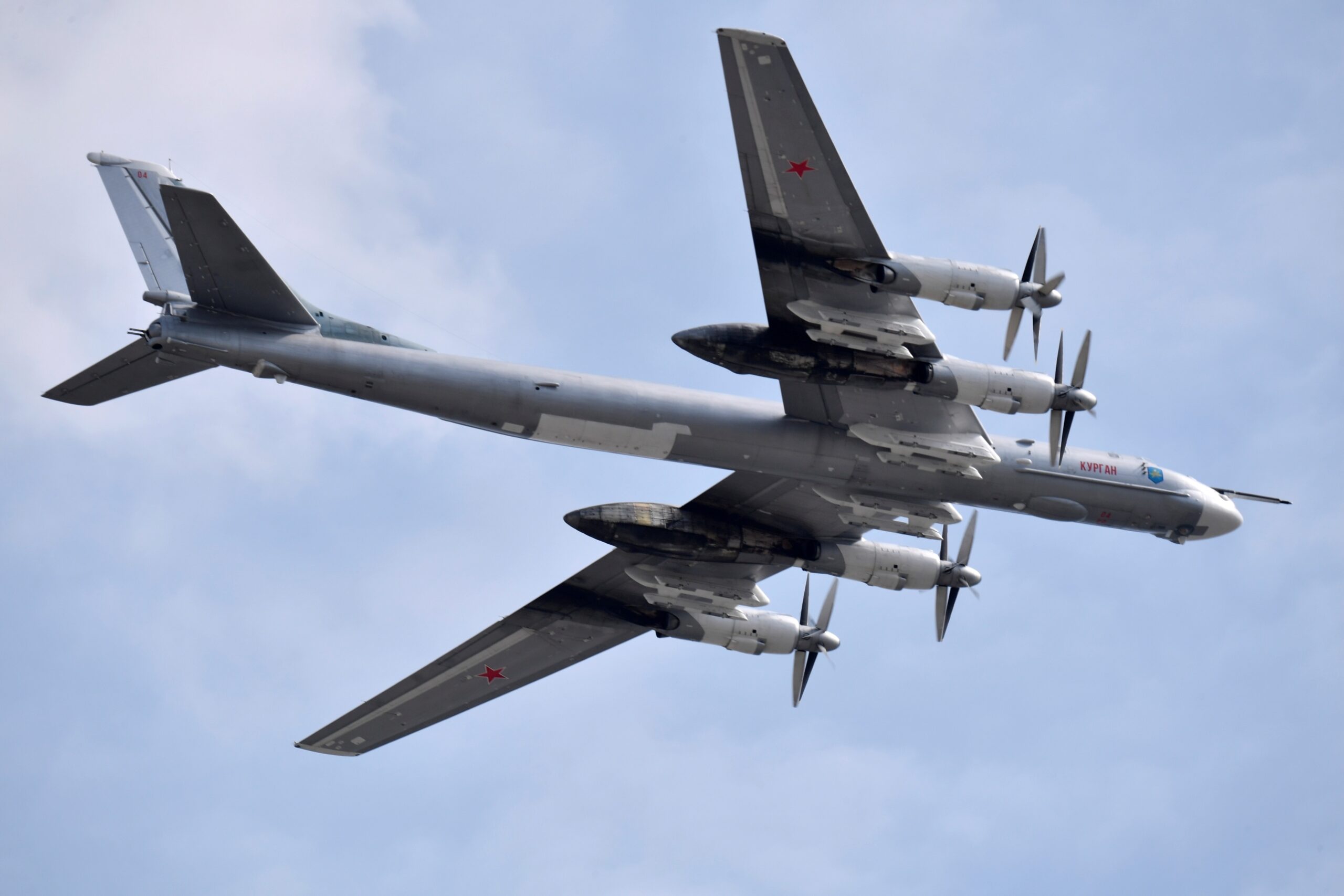
Japan—a key United States ally in the Western Pacific—scrambled fighter jets on Tuesday following Russia’s deployment of strategic bombers over waters between the two countries.
The Russian Defense Ministry said its aerospace forces conducted all the flights in “strict compliance” with international airspace rules. Japan‘s Defense Ministry said it will continue taking all “necessary measures” to protect its territory and the peaceful lives of its citizens.
Why It Matters
Russia continues to project military power around its eastern regions, despite the ongoing war in Ukraine. Earlier this month, it launched a joint naval patrol with China, sending vessels through waters near Japan as part of a military cooperation under the so-called “partnership without limitations.”
Japan, as part of a strategy aimed at containing America’s rivals in the Pacific, regularly reports movements of Russian and Chinese military aircraft and vessels around its territory.
Tokyo has an unresolved territorial dispute with Moscow over the Northern Territories, also known in Russia as the Southern Kuril Islands, in the Russian far east.
What To Know
Between Tuesday morning and afternoon, two Russian Tu-95 bombers and two unidentified fighter jets launched from Russia’s eastern mainland and flew southeast over the Sea of Japan—also known as the East Sea in South Korea—according to Japan’s Defense Ministry.
The Russian aircraft then turned northeast and flew off the western coast of the Japanese archipelago, transiting close to the northeast Asian country’s airspace, Tokyo claimed.
A coastal state’s sovereignty extends to the airspace over its territorial sea, which reaches up to 13.8 miles from the coastline, the United Nations Convention on the Law of the Sea states.
Japan established an air defense identification zone, a self-declared buffer that is not considered sovereign airspace, to identify foreign military aircraft flying toward its area of control.
Evgeny Biyatov/Sputnik via AP
The flight was confirmed by the Russian Defense Ministry, which claimed that the Tu-95MS strategic bombers conducted a scheduled flight over international waters in the Sea of Japan and were supported by Su-35S and Su-30SM fighter jets during the six-hour operation.
Russia’s long-range aircraft regularly conduct flights over international waters in the Arctic, North Atlantic, and Pacific Oceans, as well as the Black and Baltic Seas, Moscow said.
Footage released by the state-run TASS news agency shows the bombers taking off and landing at an undisclosed location, as well as being escorted by fighter jets. Details, however, remain unclear, including whether the bombers were armed with missiles.
According to the Federation of American Scientists, the Tu-95MS bomber can carry six to 16 nuclear-armed, air-launched cruise missiles. Last November, the Russian military deployed this type of bomber for a joint patrol over the Sea of Japan with Chinese bombers.
Two Tu-95MS strategic missile carriers escorted by Su-35S and Su-30SM fighter jets performed a scheduled flight over the waters of the Sea of Japan.
The duration of the flight was more than 6 hours.
📹MoD RF (Aug. 19)https://t.co/3r9Uaho5Kk pic.twitter.com/Cvlwpq8QIM— Massimo Frantarelli (@MrFrantarelli) August 19, 2025
What People Are Saying
Japan’s defense white paper 2025 read: “Russia has been conducting intensive military activities in the region encompassing the Northern Territories, alongside continuing its aggression against Ukraine. Russia has also been observed engaging in joint activities with China involving aircraft and vessels.”
The Federation of American Scientists said in a report on Russian nuclear weapons in May: “Russia carried out several heavy bomber exercises during 2024, including in October when some Tu-95MS bombers participated in what the Kremlin called a ‘Strategic Deterrence Forces exercise,’ during which the aircraft fired air-launched cruise missiles.”
What Happens Next
It remains to be seen when Russia and China will organize another joint air patrol with their nuclear-capable bombers over waters near Japan to demonstrate military coordination.
